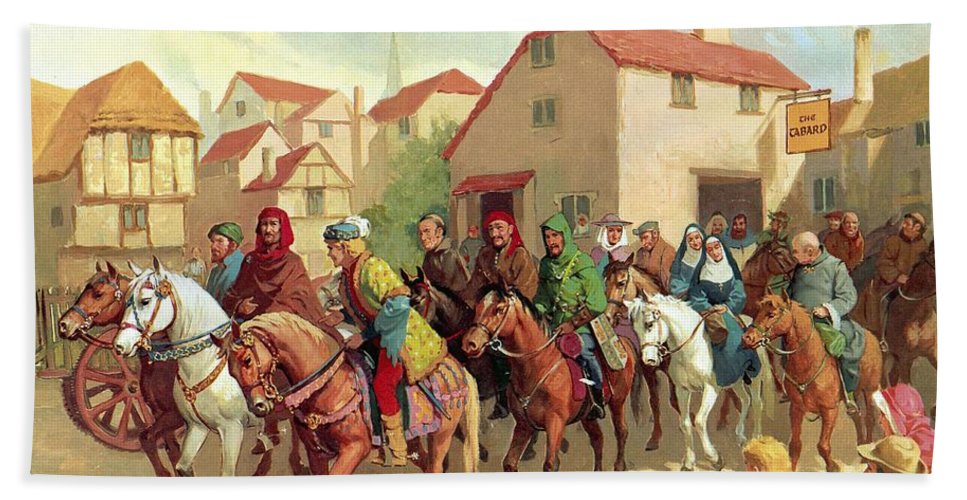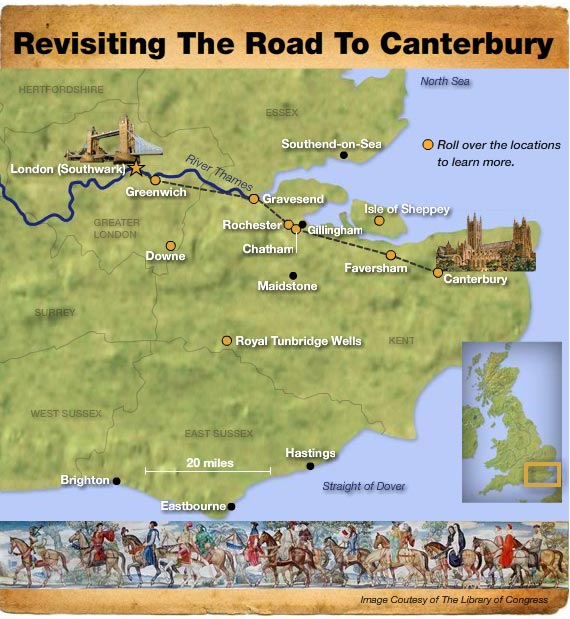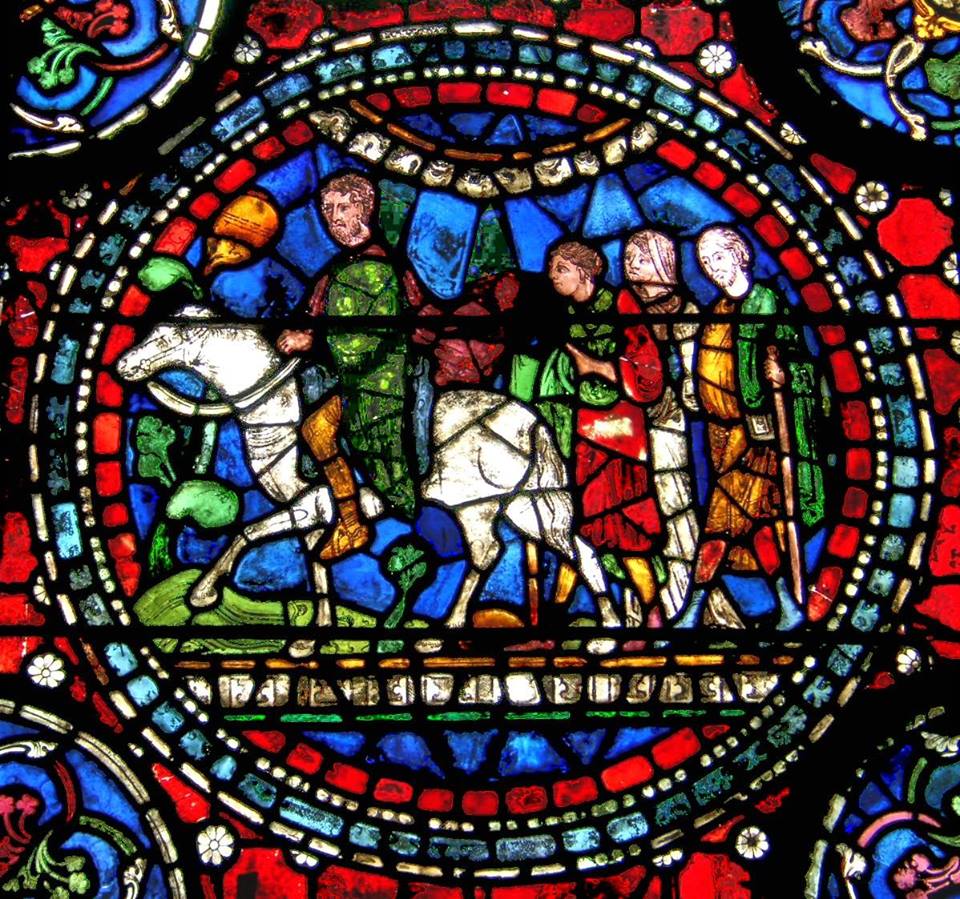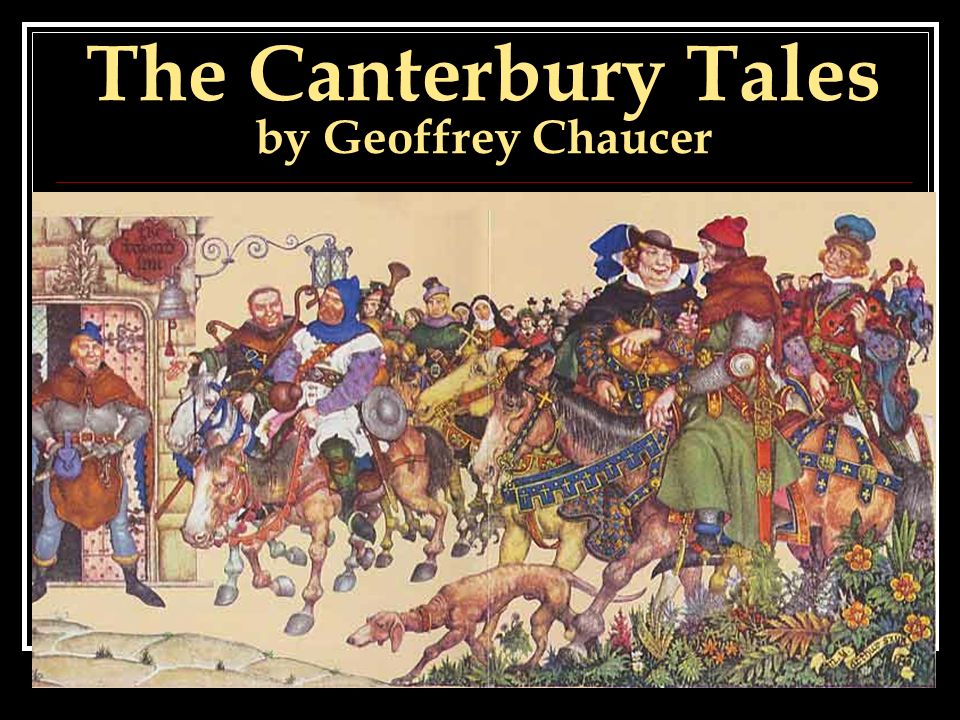Canterbury Tales: Sea Captain’s Tale and The Prioress’s Tale

Canterbury Tales: Sea Captain’s Tale and The Prioress’s Tale
Written in PEEL [Point, Evidence, Explanation and Link format] by BunPeiris.
Compare & contrast the content, themes and character portrayal in “The Sea-Captain’s Tale” & “The Prioress’s Tale”
Geoffrey Chaucer is humble: appeals to the readers to credit Jesus Christ for the inspiration of everything they would have learned in reading Canterbury Tales [1387–1400 AD]. Geoffrey Chaucer is gentle: he seems to have grasped depth of human fraility and avoid being too critical of the pilgrims, who are on the way to beg for the healing powers of martyr Saint Thomas Becket in Canterbury. Geoffrey Chaucer is silk: “distill and rain golden dew-drops of eloquence into the English Tongue” his contemporary John Lydgate professed. Chaucer was the most representative poet of medieval era: he would not be contained in a couple of limited aspects of humanity, in the sense, unlike other writers, he presents a cross section of the society for a closer view of his readers. Geoffrey Chaucer made more than a difference, he paved the path to English Literature: he stood his ground and made the decision to write in English although French was the language spoken by those in power. Most of all, Chaucer’s art of characterization is free from personal bias: his portrayals are that of impartiality as those of Will, the master. Would it be possible for anyone not to have an immediate liking to Chaucer? Geoffrey Chaucer is all pearls.

“The Sea-Captain’s Tale” reveals the incapacity of a morally fallen man to embrace, in a bear hug, the true friendship extended to him by an honest man while “The Prioress Tale” lay bares the incapacity of an intolerant community to catch onto the innocence of a child as young and tender as of seven years. Both pearls in the end, testify to sinful incivility and cruelty , it ought not surprise readers. After all, as Czech

playwright and president (1989-2003) of Vaclav Havel (1936 –2011) put it in a nutshell: “no straight arrow was ever fashioned out of crooked timber of humanity”: human frailty. To say the man is made in image of god is a fallacy. One must not expect any quarter of kindness from another: Jewish quarter of the city could not hold an olive leaf to a singer kid. Neither one must expect gratitude from another: the monk could not value deep friendship, (or philia as the Greeks called it and in modern English might be called true friendship) it over an indecent desire.

Both of these characters, i.e. The Prioress and Ship Captain, strike a balance between each one’s individual and typical aspects. Chaucer’s Prioress is at once individualized and typical. The Prioress is a model of the caliber of nuns of the Middle ages, or Chaucer’s times: well bread, refined and genteel. That bears evidence for the typical characterization of nuns. The Prioress, by status, is a head of a convent. But then again, Chaucer individualize her as Madam Eglentyne. However, it is quite evident that she has strayed off the path prescribed for the nuns in Christianity. Her love for finery and luxururies in life and her pleasure in etiquette runs against her religious vows of frugal living and self denial. This seems surprising in a nun who would, in reality, be expected to aspire for an auster life rather than refinement and elgence. One would expect her to win the respect through her religious leanings rather than through her persistent efforts at being ‘courtly’. Her worldly perceptions with respect of appearance or public image is in diametric opposition to what is expected of a nun. Chaucer has presented her realistically with traits or rather, eccentricities of contemoporary prioress running in her too. She seems to be a medievel version of modern dumb blonde, a conspicuously attractive but stupid blonde woman, woman who relies on her looks and projected image rather than on intelligence and intellect. But then Chaucer, a man who has seen the world, by virtue of his primary career being in diplomacy, narrating in gentler vein refuses to be engaged in outright criticism of any of the characters, especially on ladies. The Prioress’s feminine frailities are not harshly dealt: Chaucer seems to smile at her pretentions and vanities.

Nevertherless, not all the facts bared open by Chaucer are not crystal clear. Chaucher challenges the reader when he refers to the motto on Prioress’s “shining gold” brooch: “Amor vincit omnia” means love conquers all. What is this love that she is in love with: divine love of the god or the amorous love of the man. How is the reader supposed to read it? Herein with such factual matters, Chaucer offers no clues.
But then whenever, Chaucer makes his own commentaries upon the factual matters, he enlightens the readers of his thinking, albeit very lightly: “Her demeanor was so pleasant, and so warm; Though at pains to ape the manners of the court.” There goes the revelation. Chaucer praises her indeed, but then in the same breath, he seems to make fun of her. The lady with a pleasant demeanor becomes monkey-like: she takes pains to ape courtly manners. So the reader may interpret that courtly manners are not natural to her at all: she is a pretender.
Chaucer also tells that “she spoke French well and elegantly As she’d been taught it at Stratford-at-Bow, For French of Paris was to her unknown.” Therein too, Chaucer reveals she is not truly an aristocrat. Does this ring a bell on the line between silk-smooth accent of Oxford educated S.W.R.D. Bandaranyake [1899- 1959], the Prime Minster of Ceylon assisinated by Central Intellignec Agency aka CIA versus the thick Sri Lankan accent of R. A. Premadasa [1924 –1993] the Presdint of Sri Lanka assisnated by Tamil Tiger terrorists? Is this analgous with respect of the situation of Sri Lankan English versus Received Pronunciation, or RP for short, the accent often described as typically British, The Queen’s English and Oxford English?
Dr. R. Sen in the thirteenth edition of “The Prologue to the Canterbury Tales” sheds light: “There are critics, like Prof. Manly and Dr. Wyatt, who belive that Chaucer is here poking fun at French, spoken at Stratford. The Anglo-French, spoken at the court, must have been spoken well, because the court was full of Frenchmen and the young aristrocrats made it a point to learn their French Accent in Paris. But the fashion of speaking French at Stratford was set by Queen Philippa’s sister, Lady Elizabeth, who became a nun there. So the joke is not on the French spoken in the court, but on that spoken at certain convents like the one at Statford.” (Sen)
In line with her character, the Prioress chooses to narrate a tale with a religious overtone. In fact, the pearl of a tale goes to the extension of seeing direct intervention by Virgin Mary. Her story of the martyred child resembles popular saints’ stories of the day wherein a man of supreme faith is hunted down. The morbid tone and the violent nature of the events in the story seem to be in contradiction to a personality as sensitive as the Prioress’s is supposed to be, suggesting, ironically that she has been blinded by the sentimental aspects of religious tales. She narrates “Every Jew, by order of the magistrate That knew of murder had to die A shameful death by torture on the spot.” She seems to have forgotten ten commandments forbid murder, even in the name of the worldly law. As Sophocles’s Antigone reminds King Creon, that a law of man that violates the divine law is not a law at all. Furthermore, Prioress’s condemnation of the whole community of Jews, testifies to the fact that she has forgotten that Virgin Mary too is Jewish, as the child murderers of the tale. So is Jesus Christ. In her tale, she seems to convey that the religious would always be rewarded as the murdered boy found eternal peace in heaven. However, the sea captain would have contrary views. He seems to believe the even the monks ought have fun even when the act amounts to betrayal of the best friend and adultery with the wife of his best friend. Well, that is to live in sin.
The Sea Captain’s character is in diametric opposition to that of The Prioress. Unlike the prioress, Ship Captain is somewhat uncouth (crude, uncultured) and bored with morality: “he hadn’t time for scruples or fine feeling.” In line with his character he chooses to narrate tale of deception and adultery that will also feature the betrayal. Ship Captain’s tale is a Fabliau, primarily a French genre of which the elements are trickery and deception, most often blended with adultery. The ship Captain’s tale reminds the readers that beautiful woman is always well aware of the sexual tensions that she arouses in others. And she is also aware of the inherent value of her sexual attractiveness. The wife of the merchant found her sexual attractiveness to her profit and fulfilled her sexual satisfaction outside of the marriage.
Furthermore, ship captain’s
tale reminds all that brothers are born only to the same mother: outside of
family, there is no existence of brotherhood. Friends can never be brothers. All
of them leave on day, if do not betray. The monk has vowed eternal brotherhood
with the merchant that he “would be a brother to him while life lasted.”
However, the monk who “claimed kinship” with merchant suffers no pricks of
conscience when the opportunity was availed to him to betray his friend by
committing adultery with his wife. The monk, “a handsome, pushing fellow” had
set up himself from the very beginning at his merchant’s friend’s home:
“a free spender, Brother John especially
While staying in the house; most generous,
Eager to please, and never mind the cost.
He’d not forgot to tip the meanest page
In the whole house; for when he gave
His host, and all the servants in the place,
Some gift that was appropriate to their standing”
His success is no secret: the path to the chamber of the mistress is paved through quarters of maids and pages. Here in sharp contrast are the two characters; while the monk is scheming to the most degrading depth, the merchant is naïve to the extreme ends. A beautiful wife of a naïve friend gives birth to a situation, where even the saints would not be able to resist the temptation. After all, who would run away from a pearl of beauty, sin or crime or both?
Works citedSen, Dr. S. “The Prologue to the Canterbury Tales.” Chaucer, Geoffrey. The Canterbury Tales. New Delhi: Unique Publishers, 1990.
